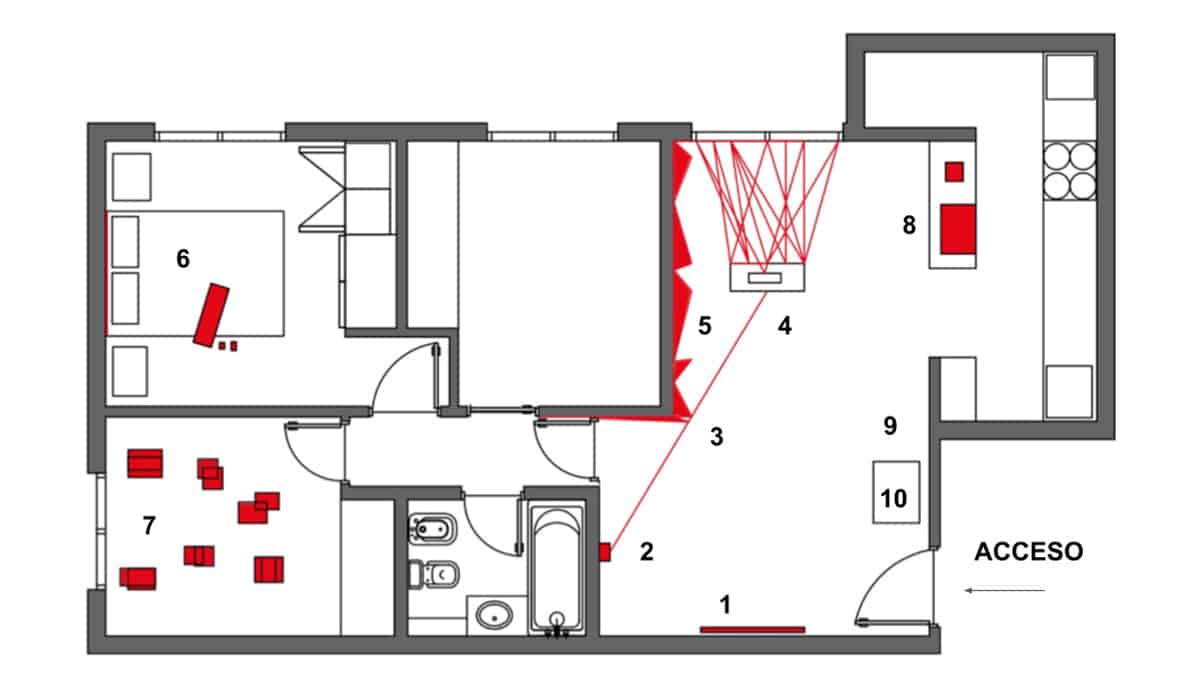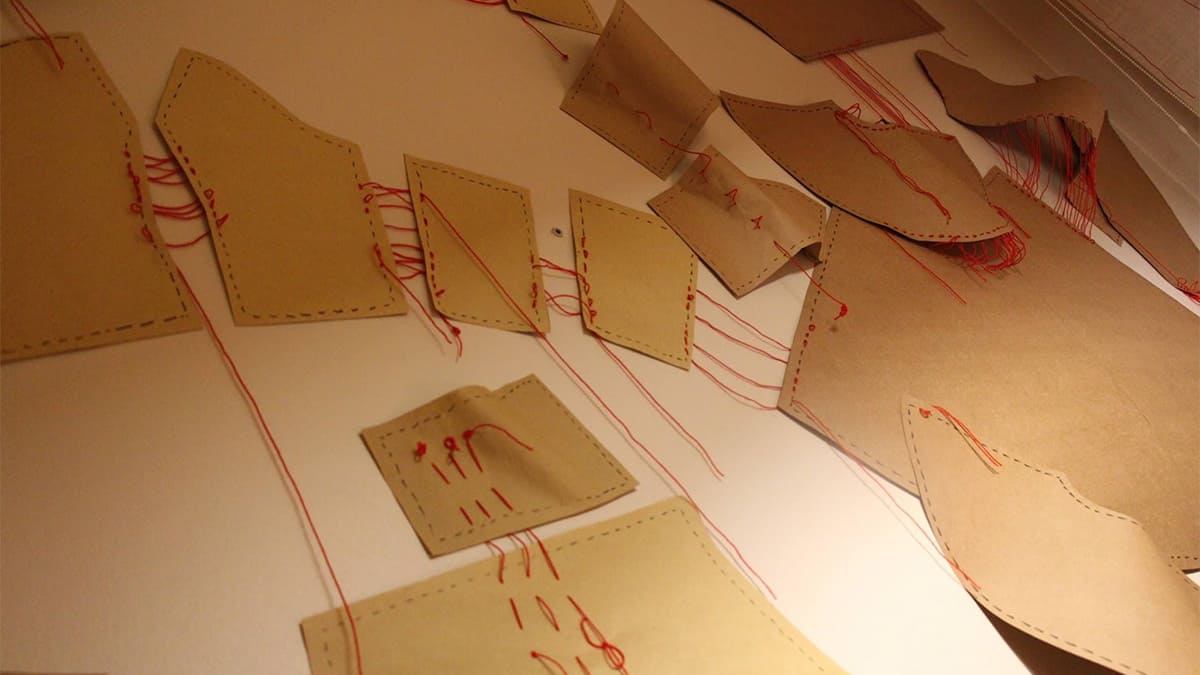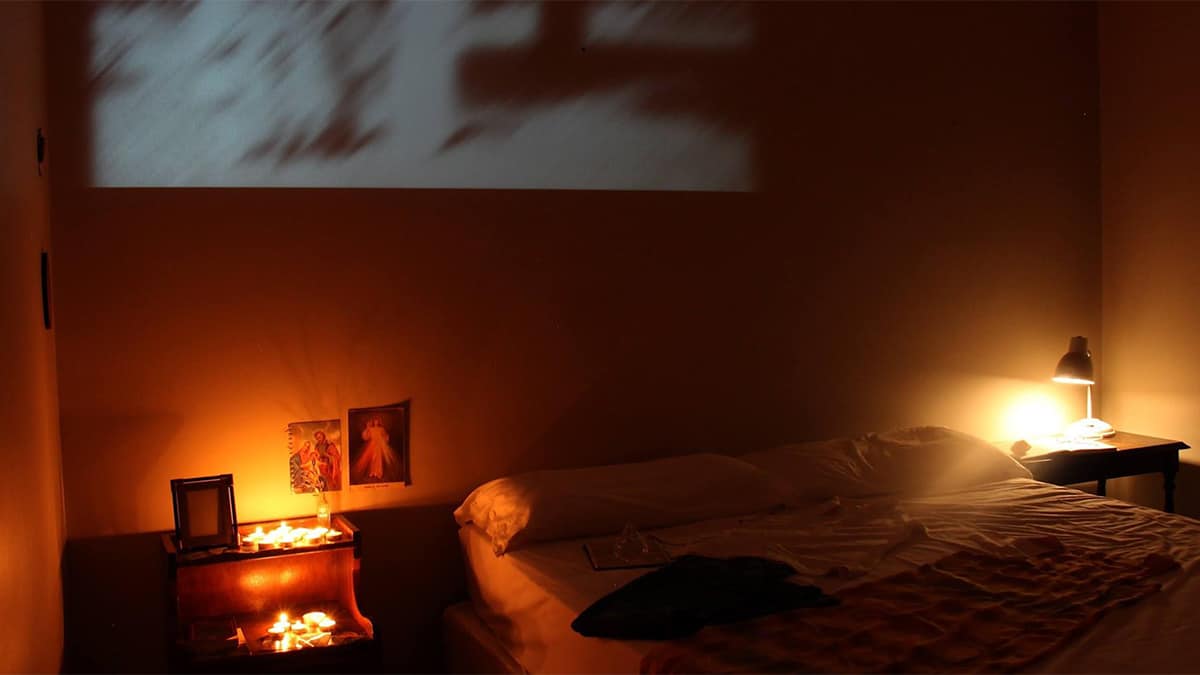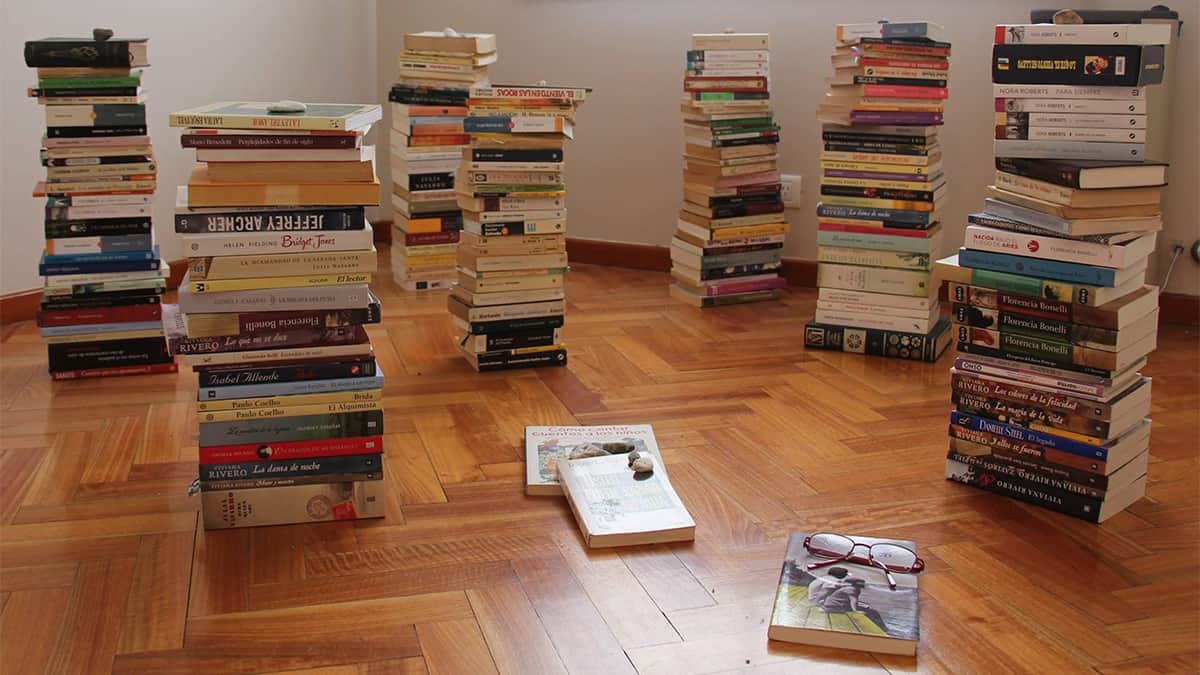Conde and the sewing machine (2021)

Conde and the sewing machine (2021)
Site-specific intervention
Several sizes
This house is empty today. It used to be my mother’s house for over twenty years. I modify space and put the memories I found there in order, trying to hold the memory she is losing. I reflect on the encounter of three generations: the grandmother, the mother and the daughter; women who sew.
My invitation is to walk around three levels spun by bonds and memories. It starts off at the room of lost memories, what is out of reach. It continues with the master bedroom, what is important, what defines us. Here, a video on a loop repeats what is treasured over and over. Lastly, the white room, the light. Location totems. A yearning to return.

- Textos de sala + texto curatorial
- Fotografía bordada + yeso + hilos rojos
- Texto sobre piso + hilos rojos
- Máquina de coser + telas + textil de hilos rojos
- Collage en papel + hilos rojos
- Proyección de video + imágenes en blanco y negro + altar + ropa + cartas +
- Instalación con libros y piedras
- Libros de recetas + galletitas
- Qr cuento María Paula Alvarado Castro
- Flyer + libro

In the main space, a thread weaves the image of the three generations linked by sewing. The clothes we wore when we were children, made out of patterns cut out by mom, which were copied and relocated on the wall. Is there a pattern? Does what should be exist?
I think: I never wanted to learn how to “properly” sew, yet today I embroider walls and knit the void.


In this space I located all treasured memories. Those one holds on to. Those one tries not to lose and devices all kinds of tricks so as not to.
On a loop, a reel of rescued slides, intimate, everyday images turned into a bedhead. Among them, dress-up clothes, comfy clothes, a libreta cívica (an old-fashioned ID card) and writing pads of a frozen activity.

In a lit up third space, all the books in the house, like totems, guide us back to the present. Reading makes your mind work, it keeps you in contact with new worlds. They are neural paths.
Writing from the artist Emilce García Garrido about Conde and the sewing machine (2021)
In an apartment in Belgrano, where the artist’s mother used to live some time ago, its doors open to a double journey: around space ̶ small, modest, intimate ̶ , and around time ̶ vague, elusive, slightly historical, touching.
When we enter the surrounding garden towards the old building we are already walking along that double path which takes us to the back of the parcel and back to the times of a family story. When we see the name of the show next to the doorbell: “Conde and the sewing machine”, we wonder about the figurative meaning implied in the image of a machine. However, when we enter the house, the question is dismissed by the vision of the sewing machine itself at the center of the scene, where a weft of red thread ties it to the walls, to the sewing patterns and to a family picture, generating a cascade of senses in every detail and every corner, as we discover how human bonds can become sharper in absence and how memory imbues every object before escaping.
Images saved from oblivion remain and flash up over and over, now faded slides, on the bedroom wall, above a small altar which seems to be holding a vigil for an old state of mind, now scattered in books, loose words and marks, unique in their calligraphy, towards memory lane. There, all the devotion towards those bonds that form us is gathered in columns of rescued books, carefully placed garments reproducing habit and the motion of fainted days.
The association between the central image of the work, the sewing machine with the red piece of cloth hanging down under the main light, and the emblematic work of Argentine art: “Primeros pasos” (First Steps,) by Antonio Berni, is almost inevitable. The mother, paused, thoughtful, somehow absent next to the piece of cloth in green, complementary color, unfolded in a way resembling the Renaissance, and the girl in her modest space rehearsing her first dancing steps, both shape a scene where reverie and melancholy are intertwined with a collective sense of historical and social aspiration. The painting is part of an always latent Argentine construct, that is revealed when dreams are unleashed by an artistic endeavor, such as Laura’s, which materializes the course of her own lineage into a work, while showing, although obliquely, the photographs of the country where it took place. A counterpoint is so portrayed between those first, opening steps, and these lines of expanded weft, footprints of steps taken, homage to what is left behind, but that is still carried, somehow.
Today, new ties of affection join this weft of ancestors, they appear in the scene and walk around it, they draw it again, they pay their small, silent homage; they fill the house with the smell of freshly baked cookies, made from a family recipe; they shyly discover the marks of a disclosed intimacy; they mourn separations and celebrate reunions. A new net takes up the mantle where life begins and breeds.
Emilce García Garrido – Artista
